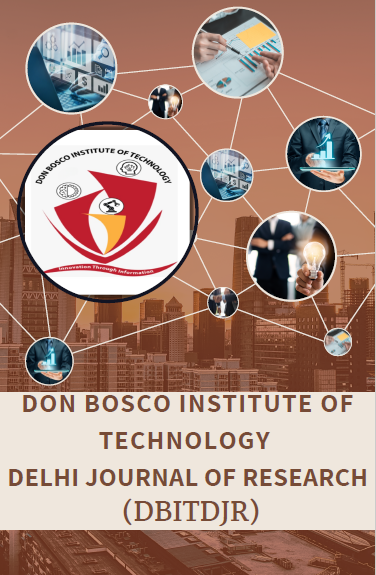An Analysis of Indian Firm Levels’ Digital Finance, ESG Performance, and Financial Performance: A Road Map to Long-Term Sustainability
DOI:
https://doi.org/10.48165/dbitdjr.2025.2.01.04Keywords:
Digital Finance, India, Sustainability, ESG, Financial Performance, Digital Finance.Abstract
This research aims to investigate the processes for using digital finance to address the sustainability triple-bottom-line challenge, as digital finance is essential for attaining sustainability. Within the context of digital finance, this article investigates the inner workings of the relationship between financial performance and ESG (environmental, social, and governance) factors. Indirectly improving both short- and long-term financial success for organizations, digital finance promotes ESG performance, according to the research. Furthermore, the key enabler for ESG and short-term financial success is the depth of digital finance adoption. According to the results of the mechanism study, improving green innovation and bolstering digital transformation would strengthen the favorable correlation between digital finance and ESG. Furthermore, according to heterogeneity study, big businesses and SOEs (state-owned enterprises) have a stronger positive effect on ESG and financial performance when it comes to digital finance use depth, but small firms and non-SOEs have a stronger positive effect on ESG when it comes to coverage breadth. By outlining potential avenues for sustainable behavior, this article deepens our understanding of digital money.
References
R. Sinha Ray and S. Goel, “Impact of ESG score on financial performance of Indian firms: static and dynamic panel regression analyses,” Appl. Econ., vol. 55, no. 15, pp. 1742– 1755, 2023.
D. Gogia, S. K. Gupta, and P. Rathi, “Sustainability reporting quality of Indian firms? Pre and Post-SEBI amendment,” J. Stat. Manag. Syst., vol. 26, no. 3, pp. 435–449, 2023.
Capozza and R. Samson, “Towards green growth in emerging market economies: Evidence from environmental performance reviews,” 2019.
M. Aydin and O. Bozatli, “The effects of green innovation, environmental taxes, and financial development on renewable energy consumption in OECD countries,” Energy, vol. 280, p. 128105, 2023.
S. Abdullah and B. Morley, “Environmental taxes and economic growth: Evidence from panel causality tests,” Energy Econ., vol. 42, pp. 27–33, 2019.
G. Li and T. Masui, “Assessing the impacts of China’s environmental tax using a dynamic computable general equilibrium model,” J. Clean. Prod., vol. 208, pp. 316–324, 2019.
S. E. West and R. C. Williams, “Estimates from a consumer demand system: implications for the incidence of environmental taxes,” in Distributional Effects of Environmental and Energy Policy, Routledge, 2017, pp. 117–140.
K. Kosonen, “Regressivity of environmental taxation: myth or reality?,” in Handbook of research on environmental taxation, Edward Elgar Publishing, 2022, pp. 161–174.
S. C. Karmaker, S. Hosan, A. J. Chapman, and B. B. Saha, “The role of environmental taxes on technological innovation,” Energy, vol. 232, p. 121052, 2021.
D. M. McEvoy and M. McGinty, “Negotiating a uniform emissions tax in international environmental agreements,” J. Environ. Econ. Manage., vol. 90, pp. 217–231, 2018.
J. Itaya, “Can environmental taxation stimulate growth? The role of indeterminacy in endogenous growth models with environmental externalities,” J. Econ. Dyn. Control, vol. 32, no. 4, pp. 1156–1180, 2018.
G. Aras, N. Tezcan, and O. K. Furtuna, “Multidimensional comprehensive corporate sustainability performance evaluation model: Evidence from an emerging market banking sector,” J. Clean. Prod., vol. 185, pp. 600–609, 2018.




